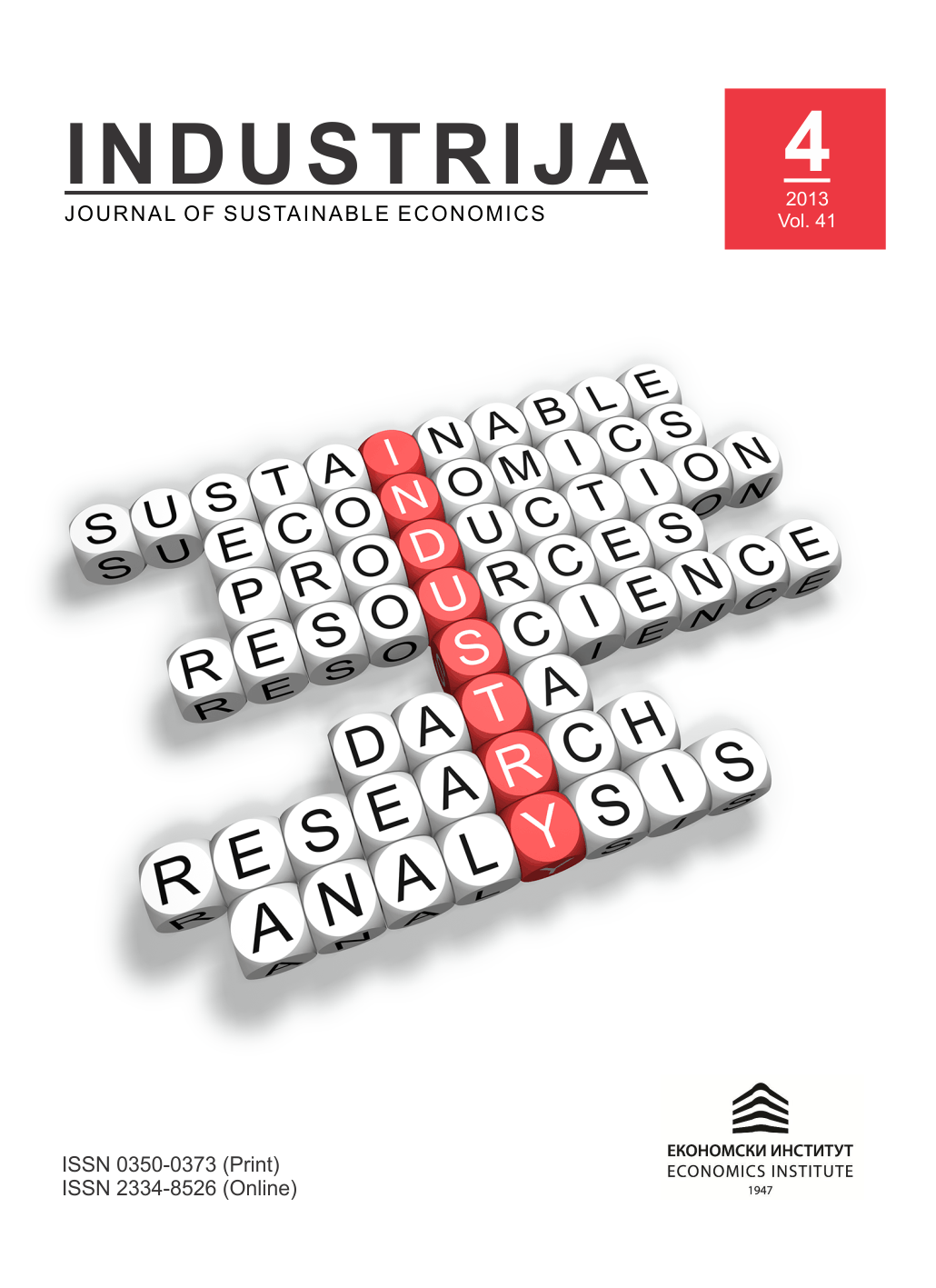A Comparative Analysis of Contribution of Human Resource Management to Organizational Performance of Banks in Serbia
Abstract
The contribution of this paper is in identification, proving and presentation of practice quality of human resource management as an important factor for achieving organizational effectiveness of banks. A group of correlations has been defined in this paper to be measured in order to reflect the impact of HRM practice on the effectiveness of banks in Serbia, which can lead to better functioning of not only banking organizations, but also of all other organizations in our environment and under current circumstances. The results of this study showed that banking organizations that have better HRM practices possess a more competitive workforce and better organizational performances, which further highlight the need for a more systematized and institutionalized use of human resources within commercial banking sector in Serbia
References
Albert, M. (1990). "HR Profit Power", Personnel, 67(2): 47-49.
Arthur, J. B. (1994). "Effects of human resource systems on manufacturing perfor- mance and turnover", Academy of Management Journal , 27(3): 670-687.
Becker, B., Gerhart, B. (1996). "The impact of human resource management on organizational performance: Progress and prospects", Academy of Management Journal, 39(4): 779-801.
Collins, C., Smith, K. G. and Stevens, C. K., (2001). Human Resource Practices, Knowledge-Creation Capability and Performance in High Technology Firms [online]. Available from: [www.ilr.cornell.edu/cahrs].
Delaney, J. T., Huselid, M. A. (1996). "The impact of human resource management practices on perceptions of organizational performance", Academy of Management Journal, 39(4): 949-969.
Delery, J. E., Doty, D. H. (1996). "Modes of Theorizing in Strategic Human Resource Management: Tests of Universalistic, Contingency, and Configurational Performance Predictions", Academy of Management Journal , 39(4): 802-835.
Huselid, M. A., Becker, B. E. (1997). "The Impact of High Performance Work Systems, Implementation Effectiveness, and Alignment with Strategy on Shareholder Wealth", www.ilr.cornell.edu/cahrs, 123.
Ichniowski, C., Shaw, K., Prennushi, G. (1997). "The Effects of Human Resource Management Practices on Productivity: A Study of Steel Finishing Lines", American Economic Review, 87(3): 291-313.
Kravetz, D. (1988). The Human Resources Revolution – Implementing Progressive Management Practices for Bottom-Line Success, Jossey-Bass Publishers, San Francisco, CA
Terpstra, D. E., Rozell, E. J. (1993). "The Relationship of Staffing Practices to Organizational Level Measures of Performance", Personnel Psychology, 46(1): 27-48.
Welbourne, T. M., Andrews, A. O. (1996). "Predicting the performance of initial public offerings: should human resource management be in the equation?", Academy of Management Journal, 39(4): 891-919.
Wright, P. M., McMahan, G. C., McWilliams, A. (1994). "Human resources and sustained competitive advantage: a resource-based perspective," International Journal of Human Resource Management, 5(2): 301-326.
Zubović, J., Jeločnik, M., & Subić, J. (2011). Analiza HR indeksa u finansijskom sektoru Srbije. Industrija, 39(1), 227-242

